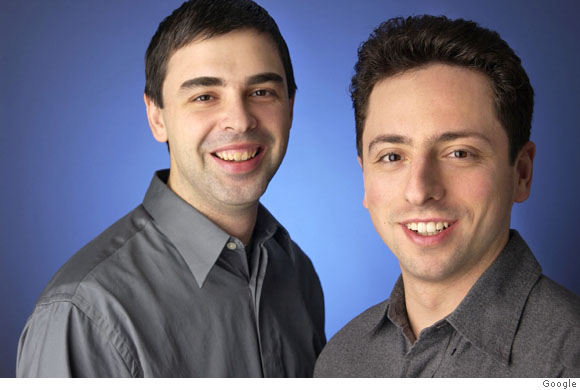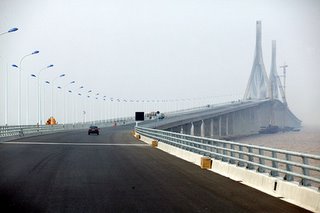Post Title
→Ingrid Marie Rivera, Miss World Puerto Rico 2005
Post URL
→https://blognews12.blogspot.com/2005/12/ingrid-marie-rivera-miss-world-puerto.html
Visit All News Blog for Daily Updated All News Blog Collection
Wonderful Things and Celebrity Gossips From Cyberwebs Attracting One's Interests and Curiosities! Top celebrities pictures wallpaper photos pics, Top celebrities wallpaper pictures photos pics, Movie wallpapers photos pictures pics, Movie wallpaper pictures photos pics, Actresses wallpapers photos pictures pics, Aactor wallpaper pictures photos pics, Funny images photos wallpaper pictures pics, Top desktop wallpaper pictures photos pics

Ingrid Marie Rivera, 2nd Runner-up at the 2005 Miss World pageant. Link

Ingrid Marie Rivera, 2nd Runner-up at the 2005 Miss World pageant. Link
 After becoming Internet moguls, Google Inc. co-founders Sergey Brin and Larry Page are dipping their toes into Hollywood.
After becoming Internet moguls, Google Inc. co-founders Sergey Brin and Larry Page are dipping their toes into Hollywood. NEW YORK: A daily intake of vitamin D can keep the cancer away, or so says a new study. It reduces the risk of breast, colon and ovary cancer by up to half, according to a 40-year research review carried out at the University of California, San Diego.
NEW YORK: A daily intake of vitamin D can keep the cancer away, or so says a new study. It reduces the risk of breast, colon and ovary cancer by up to half, according to a 40-year research review carried out at the University of California, San Diego. Linked Hybrid, Beijing
Linked Hybrid, Beijing Olympic Stadium, Beijing
Olympic Stadium, Beijing Dongtan Eco City, Dongtan
Dongtan Eco City, Dongtan Donghai Bridge, Shanghai/Yangshan Island
Donghai Bridge, Shanghai/Yangshan Island

 National Swimming Center, Beijing
National Swimming Center, Beijing
 Beijing International Airport, Beijing
Beijing International Airport, Beijing 





 Email worms aren't always as harmful as generally thought.
Email worms aren't always as harmful as generally thought."I would like to dedicate this award to all my team mates at my club, my family - who have always stuck by me during the difficult times and to God for given me the health to do what I enjoy doing which is playing football. Any one of us could have won the award, it's a dream come true for all of us.
After winning this award I want to help my team by producing my best form. I want to go on helping my team mates and be worthy of representing the team. I'm getting ready for the World Cup - I want to go back to Brazil with another title.
I'm the happiest man on earth - I play for a great team, I have lots of friends, people appreciate the way I play, they appreciate my club and I want to continue to give happiness.

Photo Courtesy of Xinhua/Reuters!

Dean Garstecki, of Northwestern University, said that an increasing number of young people were now experiencing the kind of hearing loss found in aging adults.
Low cost earbuds were more likely to increase the risk of loss in hearing than muff-type earphones, according to Garstecki.
The research found that MP3 users often listen to music at 110 to 120 decibels which can cause hearing loss after about an hour of listening. Because earbuds are placed directly into the ear, they cause damage by boosting the sound signal by as much as six to nine decibels.
Garstecki advised lowering the volume levels while listening to music. "If music listeners are willing to turn the volume down further still and use different headphones, they can increase the amount of time that they can safely listen," he said.
Noise-cancelling headphones are better because they reduce or eliminate background noise. But such headphones are often less popular because they are more costly and more visible than the tiny earbuds.
The browser that finally broke Microsoft's monopoly just got its first major update. If you haven't switched from Internet Explorer yet, consider Firefox 1.5 your invitation to do so. This new release (Win 98 or newer, Mac OS X 10.3 or newer, Linux, free at http://www.mozilla.com/ ) looks almost like its predecessor, but it's worth downloading for that very reason. It incorporates useful improvements without forcing users to learn anything new.

 Recently a so-called new creature (see left) was camera-caputred in the rain-forests of Borneo Island in South-East Asia. It attracted a lot of interests from worldwide medias, such as Nature.com, Scientific American, Washington Post, BBC.......Yupe, one is really delighted with that as the world has wheeled into the 21st century, however, maybe someone wanna to ask how about the speed of creatures extinguishs nowadays? The answer is undoubtedly much FASTER than that to discover, :-( So, don't be too much indulged in such alone a discovery, more attention may godirectly to protect Mother Nature and keep more cat-foxs living harmonyly with our humankinds!
Recently a so-called new creature (see left) was camera-caputred in the rain-forests of Borneo Island in South-East Asia. It attracted a lot of interests from worldwide medias, such as Nature.com, Scientific American, Washington Post, BBC.......Yupe, one is really delighted with that as the world has wheeled into the 21st century, however, maybe someone wanna to ask how about the speed of creatures extinguishs nowadays? The answer is undoubtedly much FASTER than that to discover, :-( So, don't be too much indulged in such alone a discovery, more attention may godirectly to protect Mother Nature and keep more cat-foxs living harmonyly with our humankinds! Confused long long time, as the one firewall-like FortiGuard installed in our uni's server blocked me to reach my sister-in-law's renowned blogspot in Chinese blog communities. What I can't understand most is that FortiGuard identifies it as a Pornography site, :-((( It's ridculous?!!!! By FortiGuard, is it necessary that everything be guarded?
Confused long long time, as the one firewall-like FortiGuard installed in our uni's server blocked me to reach my sister-in-law's renowned blogspot in Chinese blog communities. What I can't understand most is that FortiGuard identifies it as a Pornography site, :-((( It's ridculous?!!!! By FortiGuard, is it necessary that everything be guarded? 
Christina Desforges, a Canadian teenager allergic to peanuts actually lost her life after she stole a kiss with her boyfriend who had just consumed a peanut-based snack. The allergy that affects just over a percent of the population caused the 15-year old to go into anaphylactic shock despite an immediately administered adrenalin shot. The girl eventually died four days after the lethal kiss of respiratory failure.
A resident of Saguenay lying to the north of Quebec, the girl was known to be allergic to peanuts among family and relatives. However it appears that her boyfriend was not aware of the seriousness of this problem and as a result became instrumental in Desforges death. Despite an adrenalin dose and rushing her to a Quebec hospital, the allergic reaction was far too strong for doctors to treat. Dr. Nina Verreault of Chicoutimi Hospital in Saguenay who was to perform an autopsy on Desforges body suggested her case as being “very rare and worrisome”.
Food related allergies have been on the rise in recent years with peanut allergies being particularly high. In America at least 1.5 million suffer adverse reactions to traces of peanut that appear in their bloodstream through food or cosmetic lotions, with anywhere between 50 and 100 dying as a result yearly. Though the reasons for this rise are unclear, one study has pointed to a link between the use of baby creams and lotions with a peanut oil content in early childhood and allergies that arise later.
The symptoms of food allergies range from minor reactions such as rashes, vomiting and diarrhea to more severe reactions like swelling of the face, throat or body, gasping and falling blood pressure. The reactions are usually dependent on the quantity of the allergen ingested and the person's own history of reactions to casual contact. Karen Sigman, a paediatric allergist suggests that even traces of peanut on the tongue and lips are sufficient to cause such a reaction in a person who is severely allergic. She stressed that in such cases it is of paramount importance, "They (allergic youngsters) tell the people they are close to make sure they are not in contact with nuts or peanuts".
In most cases of allergy, an immediate adrenaline shot is the standard tool to treat anaphylactic shock while hospitalization serves to monitor the patient's progress or control recurrent attacks. The Montreal Children's Hospital peanut allergist, Rhoda Kagan citing instances of severe reactions to peanut dust said, “Some people have an extremely low threshold (which) varies greatly from person to person and is highly unpredictable”. For now it appears that Christina Desforges' death is a case of a severe allergy and a failure to take it seriously by letting people close to her know and help her steer clear of peanuts.
 Gordon and Betty Moore
Gordon and Betty Moore Bill and Melinda Gates
Bill and Melinda GatesWASHINGTON, D.C.--Some parents play Mozart for their infants, hoping to instill genius, or at least give them a leg up when they start school. While the strategy has been discounted as a path toward early achievement, musicians may have an edge over nonmusicians when distinguishing between speech sounds. The results may help explain how music therapy sometimes aids children struggling with language and reading.
Listening to people speak is more complicated than it might seem. The brain must make out the individual sounds--called phonemes--that make up words. The critical contrasts can be slight: The acoustic difference between the syllables "ba" and "da," for instance, lasts only 40 milliseconds. Trouble with these distinctions may make reading difficult for dyslexic children. But studies have shown that singing and rhythm games improve dyslexic children's spelling and phonological skills.
That led Nadine Gaab of the Massachusetts Institute of Technology in Cambridge to wonder whether music somehow enhances a student's ability to discriminate rapid changes within sound. She and colleagues looked for the answer by rounding up 14 adult musicians who had learned to play an instrument before they were 7 years old and who continued to play at least a few hours each week. They then pitted the speech discrimination abilities of these performers against 14 nonmusicians matched in age, gender, and general language ability. The researchers asked the subjects to listen to pairs of synthesized speech syllables and say whether they were the same, then made the sounds increasingly similar until the listeners could no longer distinguish between them.
Early music exposure appears to make a difference. While musicians and nonmusicians were equally matched when it came to distinguishing pairs of syllables that differed only in frequency, usually perceived as pitch, musicians were more adept when timing was involved. They heard finer differences in the brief gap between consonant and vowel that separates the syllables "ga" and "ka" than nonmusicians. And when both timing and frequency were involved, in the contrast between "ba" and "wa," musicians outperformed nonmusicians by a wide margin. This enhanced ability to correctly categorize speech may be what gives musicians a better memory for words, says Gaab, who presented her work at the Society for Neuroscience meeting this week.
Neuroscientist Robert Zatorre of McGill University in Montreal, Canada, says the results are surprising. "You wouldn't necessarily expect that musicians would be better at speech," he said. Further work is needed, he said, to identify the specific type of musical experience that might lead to better language skills.

Photo by Steve Granitz / WireImage.com
Hulk Hogan, son Nick Hogan, daugter Linda Hogan, and wife Brooke Hogan, were on the Los Angeles premiere of Get Rich or Die Tryin. Link

To live connect with small means; to seek elegance rather than luxury, and refinement rather than fashion. To be worthy, not respectable and wealthy,
not rich; to study hard ,think quietly, talk gently, act frankly, to listen to stars and birds, to bear all cheerfully, do all bracelly, await oceansions, hurry near.
In a word, to let the spiritual, unbidden and un conscious, grow up through the common.